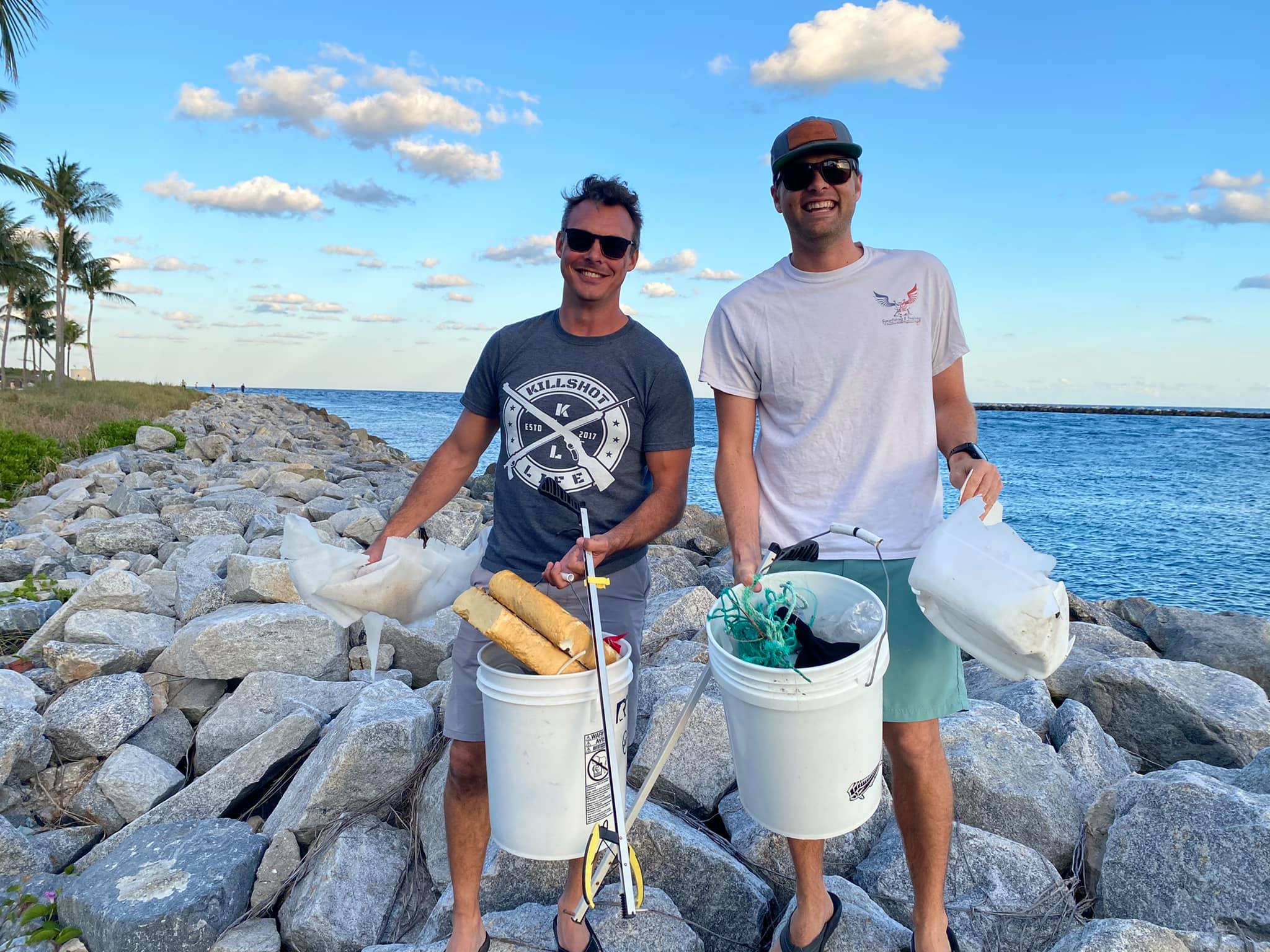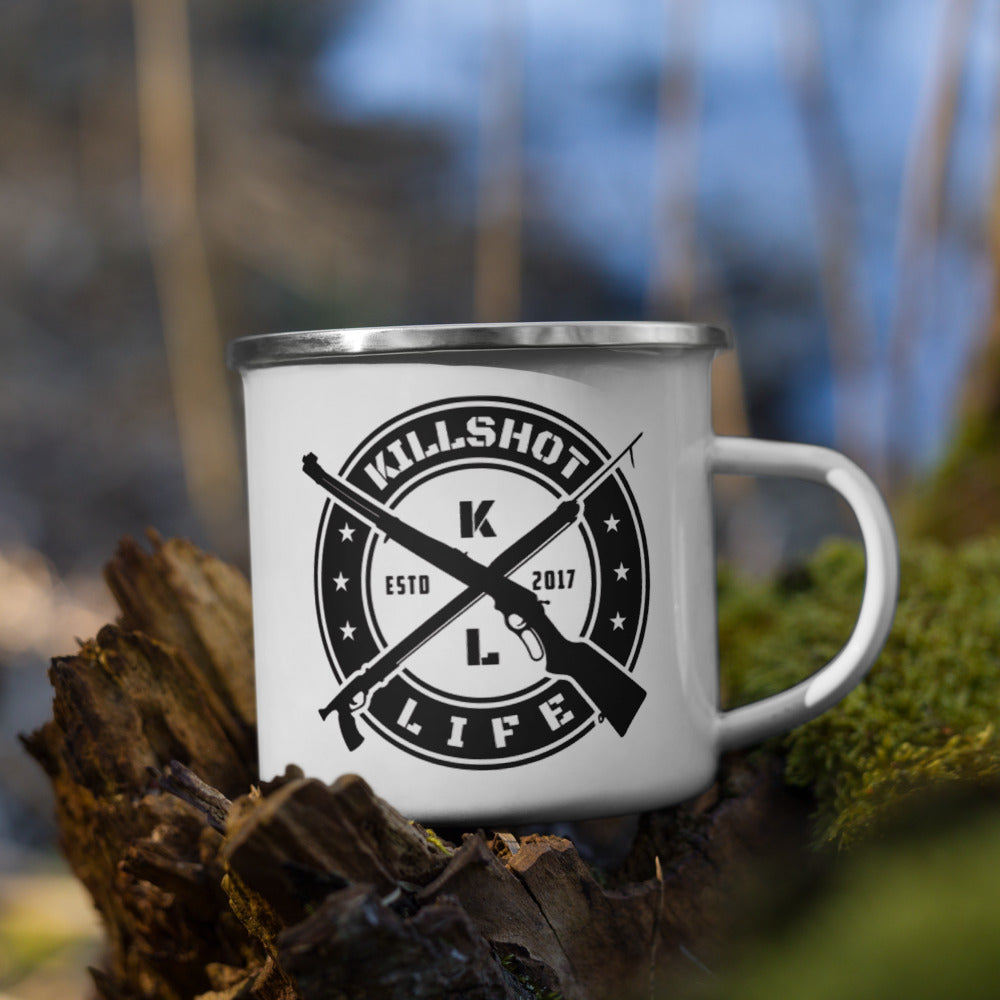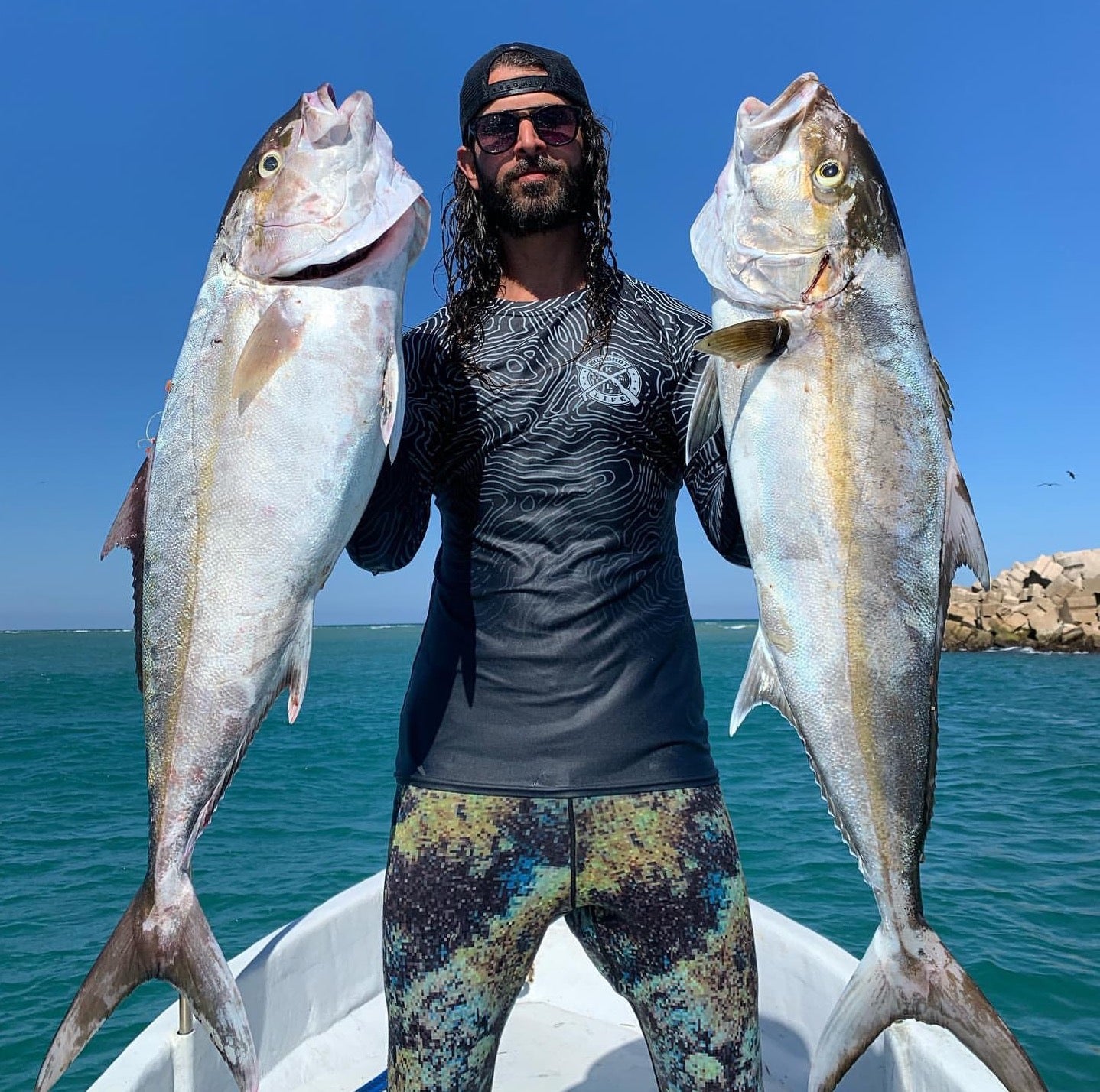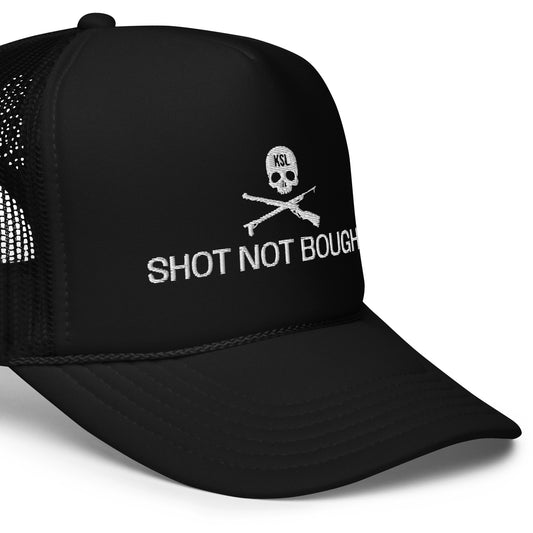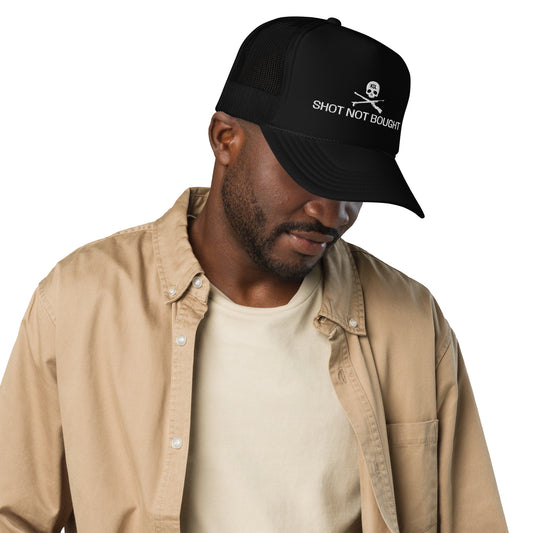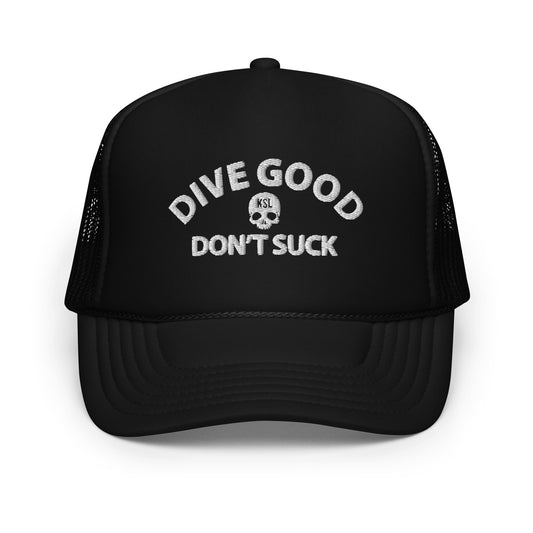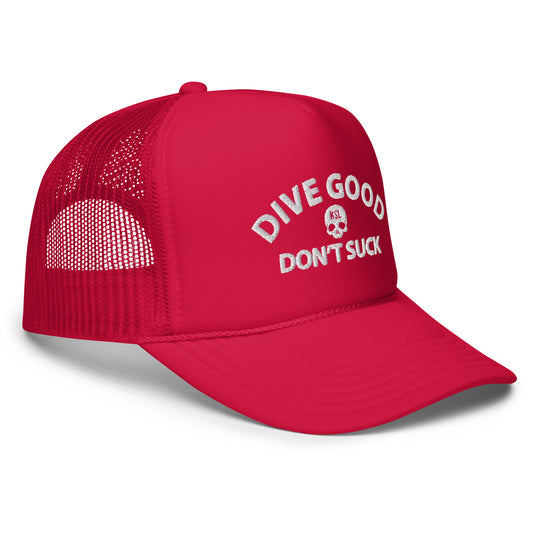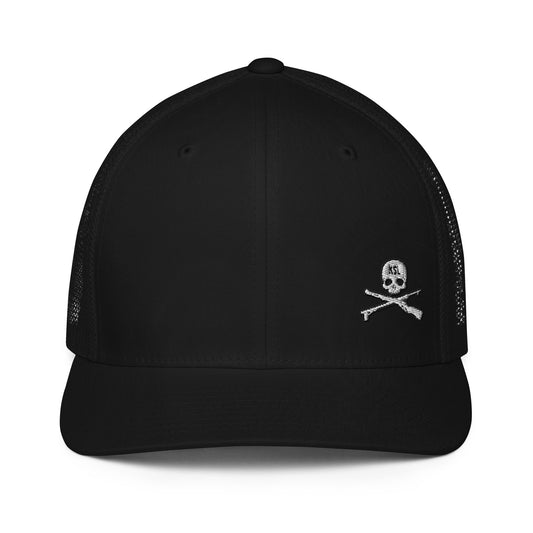Spearfishing for Wahoo: A Guide
Share

Spearfishing for wahoo is an exhilarating pursuit that combines the thrill of the hunt with the beauty of the underwater world. Known for their speed, agility, and impressive size, wahoo are a highly sought-after target among spearfishing enthusiasts. This guide will walk you through the essentials of spearfishing for wahoo, from understanding your prey to the moment you land your catch.
Understanding Wahoo
Wahoo (Acanthocybium solandri) are fast-swimming pelagic fish known for their striking appearance and delicious meat. They can reach speeds of up to 60 mph, making them one of the ocean's most formidable predators. Wahoo are typically found in tropical and subtropical waters worldwide, often near offshore banks, drop-offs, and areas where currents converge, attracting baitfish.
One of the prime spots to locate wahoos is around floating debris and weed lines in the open ocean. These areas attract baitfish, which in turn lure predators like wahoos. The floating debris and weed lines create an ecosystem where smaller fish find shelter and food. As these baitfish gather, they become an enticing target for larger predators. Therefore, if you're looking to find wahoos, targeting these natural gathering points significantly increases your chances of success.
Understanding Wahoo Habitats: The Role of Bottom Changes and Currents
How do bottom changes and currents affect where wahoos can be found?
Wahoos, known for inhabiting tropical and subtropical waters, tend to favor areas where the seabed undergoes significant structural changes. These changes create an environment rich in nutrients and smaller fish, making it an ideal hunting ground for wahoos.
Key Factors:
Depth Variations: Areas where the ocean floor depth ranges from 90 to 350 feet offer a perfect setting. The variations in depth often result in upwellings that bring nutrient-rich waters from the deep, attracting small prey and, subsequently, larger predators like wahoos.
Strong Currents: Good currents are essential. They not only aid in the movement of nutrients but also help distribute the small fish that wahoos feed on. Strong currents sweeping over structured bottoms create vortexes, which can trap prey and make them easy targets for hunting wahoo.
In summary, bottom changes and currents play a crucial role in creating a thriving ecosystem where wahoos can be consistently found. Look for areas with pronounced depth changes and strong currents to increase your chances of encountering these elusive fish.
Gear and Equipment
To successfully spearfish for wahoo, you'll need specialized gear designed for blue-water hunting:
- Spearfishing Gun: A powerful, high-quality spear gun capable of long shots is essential. Many spearos prefer guns with a reel or a float line system for handling the powerful runs of a shot wahoo; keep in mind the soft meat and skin of a wahoo means you don't want to pull hard against them when they start to run. This is another reason a float line is usually preferred.
- Fins: Long, stiff fins provide the propulsion needed to dive deep and chase after fast-moving targets.
- Wetsuit: A camouflage wetsuit can help you blend into the environment, making it easier to approach wahoo.
- Dive Knife: Always carry a dive knife for safety and to dispatch your catch quickly.
- Gloves and Mask: Protect your hands and improve visibility with quality diving gloves and a mask.
We've put together a one-stop-shop for all of this gear right here.
Techniques for Spearfishing Wahoo
- Find the Right Spot: Wahoo are often found in deep blue water near structure. Look for temperature breaks, weed lines, or current edges where baitfish are likely to be.
- Chumming: Attract wahoo by chumming the water with small pieces of fish or squid. Be patient and keep a lookout for curious individuals drawn in by the scent.
- Flashers and Lures: Wahoo are attracted to shiny objects. Use flashers or reflective lures to catch their attention and draw them closer to you.
- Stealth Approach: Move slowly and cautiously. Despite their size, wahoo are wary of divers. A stealthy approach can prevent them from being spooked.
- Aim and Shoot: When a wahoo comes into range, aim for the head or just behind the gill plate for a quick, humane kill. Some recommend a tail shot to impact their strength - it's also a tough area that won't pull out. Remember, their speed and agility require precision and timing.
How Flashers and Chum Can Help in Attracting Wahoos
When it comes to spearfishing for wahoo, using flashers and chum can significantly improve your chances of keeping these elusive fish in the area longer. Here's how each tool helps:
Flashers
Visual Appeal: Flashers mimic the appearance of small, schooling fish, creating a visual stimulus that attracts wahoo from a distance. When wahoo see the flash and movement, they are likely to swim closer to investigate.
Curiosity Trigger: The unpredictable movement of flashers arouses the curiosity of wahoo, enticing them to linger around the area. This gives you a better opportunity to take a clean shot.
Chum
Scent Trail: Chum releases a continuous scent trail in the water, which is highly attractive to predatory fish like wahoo. This scent can lure fish from afar, guiding them directly to your location.
Sustained Interest: While flashers catch their eye, chum keeps their interest. The wahoo are more likely to stay in the vicinity as they feed on the smaller bits of fish and other organic materials in the chum.
Combining Flashers and Chum
Using flashers and chum together creates a powerful combination. The flashers attract the wahoo visually, while the chum holds their interest with a compelling scent. This dual strategy increases your chances of both attracting and keeping wahoo close enough for a successful shot.
In summary:
- Flashers = Visual Attraction
- Chum = Scent Attraction
- Combined = Higher Success Rate
Why a Bungie Floatline is Useful When Spearfishing for Wahoo
Here's how a bungee floatline can make a significant difference in your success:
Reducing Pressure on the Fish
A bungee floatline stretches and absorbs the initial force when a wahoo is speared. This elasticity is critical in preventing the spear from ripping out of the fish, which can happen if there's too much tension right after the shot. By allowing the floatline to stretch, you reduce the immediate pressure on the fish, increasing your chances of a secure catch.
Enhancing the Hold of Your Spear
The stretchable nature of a bungee floatline provides a more consistent pull on the fish, preventing sudden jerks or excessive pressure that can dislodge the spear. This steady pressure helps ensure the spear stays securely embedded, giving you a better opportunity to successfully land the wahoo, especially during those intense initial moments when the fish is fighting hardest.
Minimizing Shark Interference
Wahoos are often prime targets for sharks, especially once they've been speared and are vulnerable. A bungee floatline allows the wahoo to move more naturally and swim with less restriction, making it less likely to trigger a shark's predatory instincts. By giving the fish more freedom of movement, you can sometimes deter sharks from attacking your catch.
Making the Fight More Manageable
The battle with a speared wahoo is intense. These fish are known for their speed and stamina, which can quickly tire you out. A bungee floatline helps alleviate some of the strain by stretching under pressure, taking the brunt of the wahoo's powerful runs and dives. This reduces wear and tear on your gear and helps conserve your energy during the fight, making it more manageable for you as the spearfisherman.
Protecting Your Gear and Increasing Your Chances of Success
Incorporating a bungee floatline into your spearfishing setup not only improves your odds of landing a wahoo but also protects your spear and floatline from the stress of a high-energy battle. Additionally, by reducing the chances of shark interference and improving the hold of your spear, you greatly enhance the overall success of your spearfishing mission.
When Is the Best Time to Fish for Wahoos?
The optimal time to fish for wahoos generally falls within specific water temperatures. Ideally, you should aim for periods when the water temperature ranges from 72 to 77 degrees Fahrenheit. Although wahoos can be caught year-round in waters where temperatures vary between 70 and 86 degrees Fahrenheit, they are most active and abundant when the water is within that sweet spot of 72 to 77 degrees.
To maximize your chances of a successful catch, monitor local water temperatures closely and plan your fishing trips accordingly.
How Do Water Temperatures and Moon Phases Affect Wahoo Fishing?
Water Temperatures
Wahoo, a prized catch for many anglers, thrives in specific water temperatures. The optimal range for these fish is between 70-86 degrees Fahrenheit. However, aiming for temperatures between 72-77 degrees Fahrenheit can significantly increase your chances of a successful catch. These conditions create a more active environment for wahoo, making them more likely to chase after bait.
Moon Phases
The moon phase plays a crucial role in wahoo fishing due to its effect on tides and currents. Wahoo are known to frequent high current areas, where they can hunt more efficiently. During periods of a new moon or full moon, tidal movements are stronger, creating currents that attract wahoo. Planning your fishing trips around these moon phases can help you target the most productive fishing windows.
By understanding and leveraging the interplay between water temperatures and moon phases, you can enhance your wahoo fishing strategy and improve your overall success rate.
Safety Considerations
Spearfishing for wahoo is not without its risks. Always spearfish with a buddy and be aware of your surroundings, including boat traffic and marine life. Be prepared for the powerful fight a shot wahoo will put up, and make sure your equipment is properly secured.
Conservation and Ethics
Practicing ethical spearfishing is crucial for the sustainability of wahoo populations. Only take what you need, comply with local regulations, and respect size and bag limits. Remember, spearfishing is about more than just the catch; it's about connecting with the ocean and practicing sustainable harvest methods.
How Quickly Do Wahoos Grow, and What Is Their Maximum Size?
Wahoos are known for their impressive growth rate. In just a year, they can gain up to 10 pounds, showcasing their rapid development. These sleek, silver fish, adorned with striking vertical stripes, can eventually reach staggering sizes. While typical wahoos grow to a substantial size, the largest specimens can weigh over 100 pounds and measure more than 7 feet in length. However, encountering wahoos of such proportions is quite rare.
Top Destinations to Find Wahoos
When searching for the best places to find wahoos, you'll want to focus on tropical and subtropical regions. These fish thrive in waters that offer specific conditions. Here are a few prime destinations:
1. Fiji
- Known for its vibrant marine life.
- Ideal conditions include depths ranging from 90 to 350 feet.
- Good currents enhance your chances of spotting wahoos.
2. Cook Islands
- Offers a diverse underwater landscape.
- Look for areas with significant changes in bottom structure.
- Water with moderate to strong currents is ideal.
3. Samoa
- Home to some of the most pristine waters.
- Deep locations with pronounced structural variations attract wahoos.
- Consistent currents make it a hotspot for these fish.
4. Indonesia
- Renowned for its rich biodiversity.
- Target depths between 90 and 350 feet with notable structural changes.
- Strong currents often lead to successful wahoo encounters.
These destinations are not just about the depth but also the unique underwater features and currents that attract wahoos. When planning your adventure, consider these factors to maximize your chances of finding this sought-after fish.
Conclusion
Spearfishing for wahoo is a challenging and rewarding sport that offers an unparalleled adrenaline rush. By understanding your target, preparing the right gear, and employing effective techniques, you can increase your chances of landing this prized game fish. Always prioritize safety and conservation to ensure that the thrill of the hunt can be enjoyed by future generations of spearos. Happy hunting!
At KILLSHOT Life, we embody the spirit of the ethical hunter, and we invite you to be part of this journey with us. Follow us on social media and become a part of a community that values integrity, skill, and respect for the wild.
Click here to find KILLSHOT Life on Instagram.

